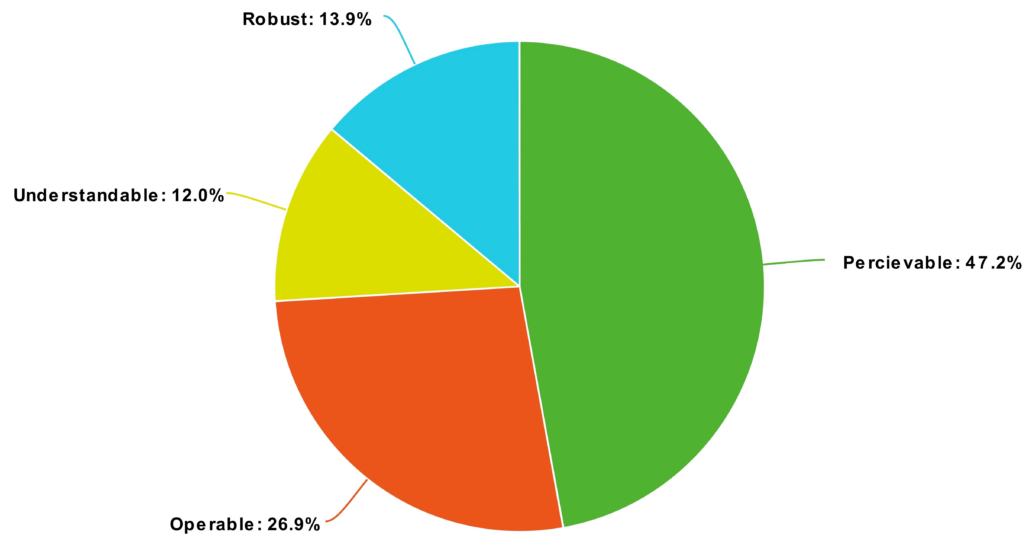Web accessibility refers to the practice of designing and developing inclusive websites and digital content that could be accessed and used by everyone, regardless of their level of ability [1]. Web accessibility has been a critical issue that affects the lives of millions of people worldwide, including persons with disabilities and those having limited access to technology. To this end, the Web Content Accessibility Guidelines (WCAG) were formulated by the World Wide Web Consortium (W3C) with the objective of assisting web developers in ensuring web accessibility for all users.
The WCAG include three levels of conformance (A, AA, and AAA) that determine the degree of accessibility achieved. In view of relevant European directives [2], as well as locally enacted laws [3], public and private-sector entities in Malta are obliged to develop accessible technology.
The goal of this project was to evaluate the extent to which websites within the Maltese context conform to these guidelines, in particular WCAG 2.1 at Level AA. The research covered Maltese small-to-medium enterprises (SMEs) across different industries/sectors.
A stratified sample of 50 websites was selected for this study, following a strategy offering a margin of error of 11.56% with a 90% confidence interval. These sites were assessed for compliance over 29 success criteria, covering 13 guidelines proposed in the WCAG. For each sample, two specific pages were selected, namely: a content-heavy page (e.g., landing page) and an interactive page (e.g., ‘contact us’ page). This approach improved test coverage across page types while monitoring for site variability. Manual and automated tests were employed to assess various success criteria. Manual tests, such as keyboard-only interaction, content review and screen-reader interaction, were carried out following a prescribed audit protocol. On the other hand, automated tests were also used in an attempt to uncover issues in markup, such as missing accessibility attributes and inappropriate heading levels. A scoring sheet was developed for this audit; for each sampled website, a percentage score was generated based on the total points obtained, thus reflecting compliance or lack thereof with the success criteria included in this assessment. The audit was conducted using a desktop browser (Chrome) while NVDA, which is an open-source screen reader, was selected as the main assistive technology (AT). The Axe and Wave tools were adopted for automated tests.
The data collected was analysed using both descriptive and inferential methods. Furthermore, the data was preprocessed for further analysis using network analysis techniques, where accessibility patterns across different websites and industries were observed. Initial results demonstrated that more WCAG compliance was necessary for the local context, with very few websites achieving high levels of conformity and most websites failing one or more success criteria.
This study has sought to identify and highlight the common issues present in the local context. However, it also aimed at raising awareness about the importance of web accessibility, the existence of accessibility guidelines and to promote its benefits ‒ not only for persons experiencing some form of disadvantage, but universally.

Figure 1. Proportion of failures with reference to WCAG principles
Student: Mike Micallef
Supervisor: Dr Chris Porter
